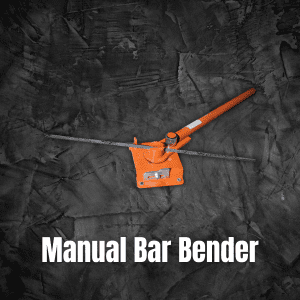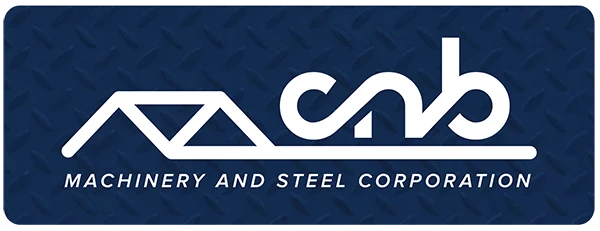
What are the advantages of using an electric bar bender vs. a manual bar bender? Rebars are essential in a construction project as they are used to provide additional tensile strength as a support for the concretes used in the infrastructure. Rebars (also known as deformed bars or reinforced bars) are found in different types of construction projects such as building constructions, subway constructions, bridge constructions and tunnel constructions. Depending on the projects, rebars are bent to a certain angle. This is where our manual bar bender and electric bar bender comes into the picture.
How do you use a manual bar bender?

Bending a manual bar bender – as the name would suggest requires the construction worker to manually bend a deformed bar. This requires great amount of strength and stamina of the construction worker. This leads the production of rebars highly dependent on the strength of the construction worker. The process of manually bending a rebar can be divided into 6 steps:
1. Setting up the rebar on the manual bar bender
Place the rebar on the manual bar bender which has the bending lever and bending plate that allows the construction worker to adjust the angle of the bending of rebar.
2. Mark the rebar
A marker must be placed to show the construction worker until where he or she must bend the rebar.
3. Secure the rebar
Tighten the clamp of the manual bar bender to secure the rebar to the bar bender.
4. Bend the rebar
Push the lever of the rebar bender until it reaches the mark that was set earlier. Make sure to apply a consistent force without jerking the machine to prevent the rebars from breaking.
5. Return the lever
Return the lever back to its original position, and untighten the clamp of the rebar bender.
6. Check the rebar that was bent
Measure and check the rebar if it was bent to the desired angle. If the desired angle was not met, repeat the process until the rebar has been bent to the correct angle.
How do you use an electric bar bender?

Unlike the manual rebar bender that is labor intensive, the electric bar bender lightens the workload of the construction worker. This will lead to a much quicker production of rebars. Here are the steps in bending a rebar using an electric bar bender:
1. Switching the bar bender on
Plug in the electric bar bender to its power source. Our TYB-D26 (10-25mm rebar bender) and TYB-D35 (10-32mm rebar bender) is a single phase machine. Once the bar bender has been connected to a power source, the machine has power.
2. Add the rollers needed for the diameter of the rebars
Place in the rotating rollers and the shafts needed for the diameter of the rebars being bent. For the roller combination tutorial of our TYB-D26, kindly click this link. For the roller combination tutorial of our TYB-D35, kindly click this link. For the roller combination of our TYB-HD42A, kindly click this link. For the roller combination of our TYB-HD42D, kindly click this link. For the R-Jig combination of our TYB-HD42D, kindly click this link. Make sure to tighten the bar stopper. You may also check the list of our bar bending machine models by clicking this link.
3. Adjust the angle setting knob
Adjust the angle setting knob to prepare the rebar bending to the desired angle. Note that this requires a trial and error process to bend the rebar to the accurate angle.
4. Press on the foot switch
In order to activate the electric bar bender, simply step on the first foot switch to bend the rebar to the first angle. Press the second foot switch in order to bend the rebar to the second angle.
5. Release the rebar
After the rebars have been bent, and the rollers have returned to its original position, you may remove the rebars from the bar stopper.
6. Turn off the machine
Make sure to turn the machine off by removing it from the power source to prevent any unwanted roller movements.
What are the advantages of using an electric bar bender over a manual bar bender?
1. Speed and Efficiency of fabricating rebars
By using electric bar benders, a construction worker can fabricate rebars quicker and much more efficiently that will save time. For the contractors of the construction projects, using electric bar benders will reduce labor costs versus using more construction workers to manually bend rebars.
2. Precision and Accuracy of bending rebars
Electric bar benders come with angle setting knobs that can make rebar bending much more accurately than manually bending rebars. Having accurately fabricated rebars are crucial for construction projects that requires accurate measurements.
3. Consistency of the angle of fabricated rebars
Using an electric bar bender will ensure that the angles of the rebars that are bent are consistent versus manual bar benders. Manual bar benders has the tendency to produce inconsistent angles as it is highly dependent on the strength of the machine operator.
4. Safety of the machine operator and construction workers
Using an electric bar bender will lessen the chance of injuries sustained from construction workers having to touch the rebars and have direct contact with the rebars. Manually bending the rebars may lead to unforeseen injuries. Using an electric bar bender while following the proper guidelines will lead to safe fabrication of rebars.
Please do not hesitate to reach out to our sales team to inquire any of our bar bending machine models.
